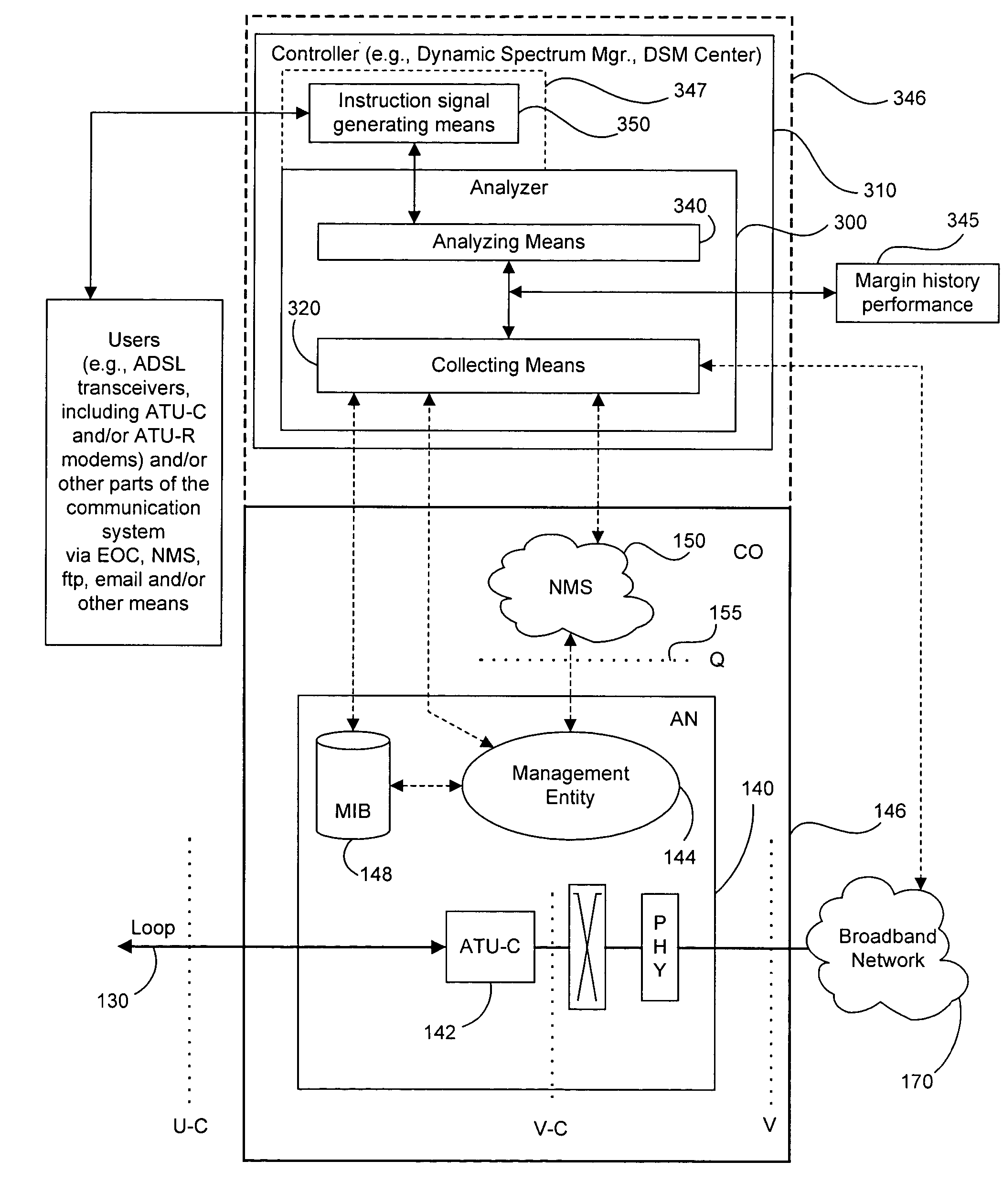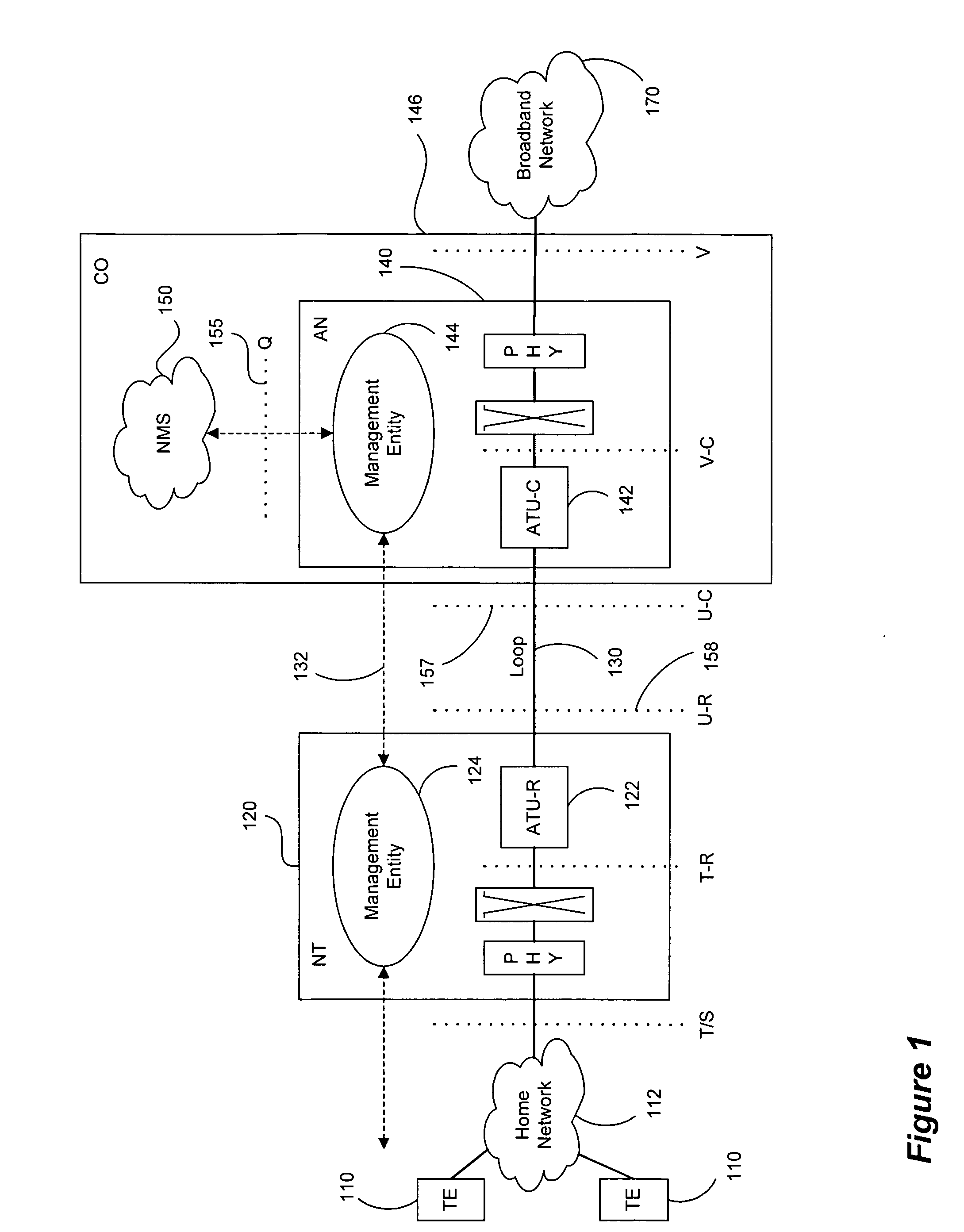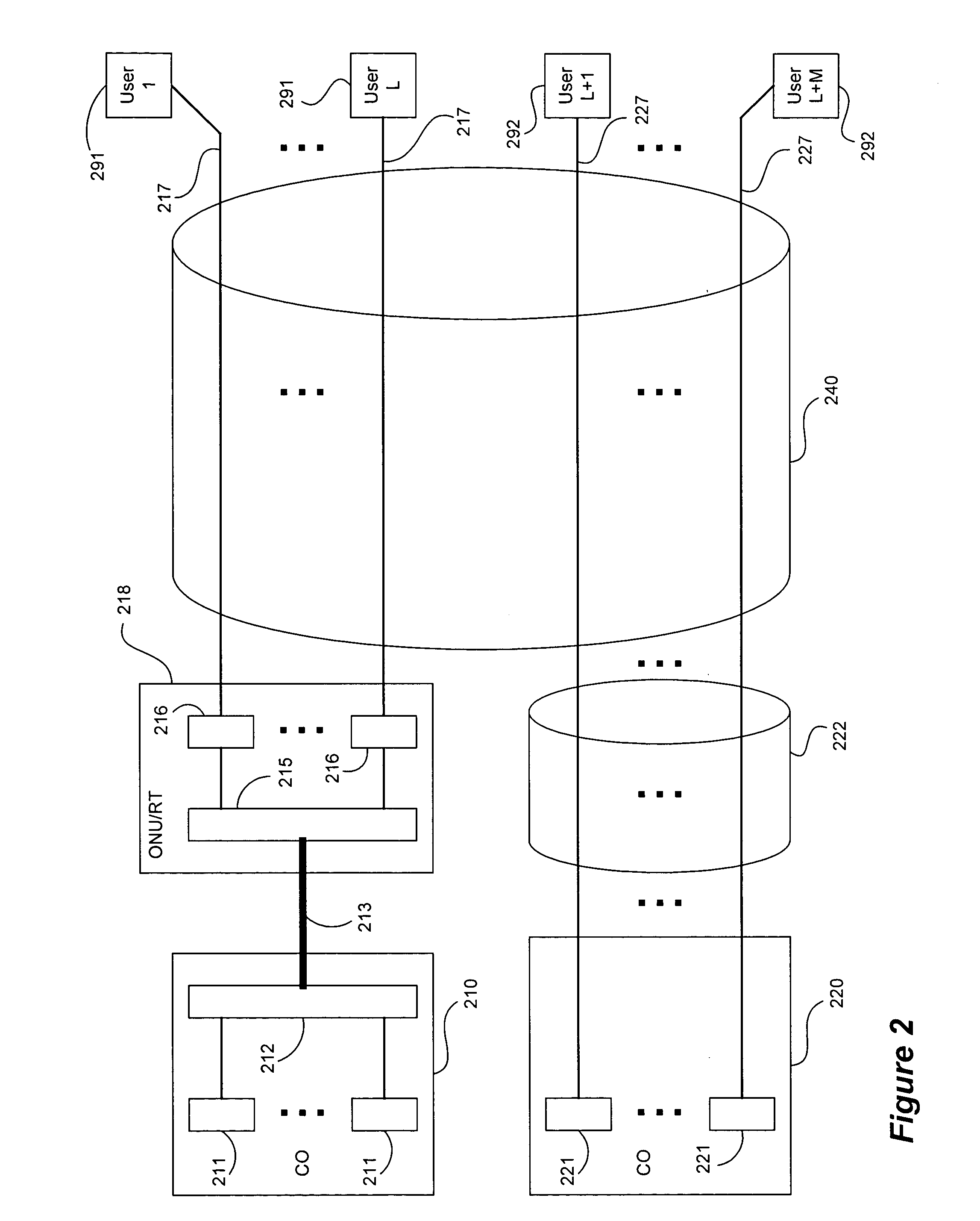These
error reduction / avoidance / repair techniques have performance costs for a communication
system in which they are used.
As is well known in the art, inadequate
power transmission levels lead to errors because the transmission power is not high enough to overcome
noise and other interference in a given channel.
The gains can be adjusted during SHOWTIME to reflect changing line conditions, etc., but may be very limited as to the amount of adjustment and the way such gains adjustments can be performed.
Depending on the equipment manufacturer and the DSL standard being used, compliance with each standard's rules and guidelines and / or other appropriate operational limits varies from strict compliance by some parties (usually leading to very conservative or timid setting of DSL service rates in operation) to grave disregard for even basic operational guidelines and rules.
For example, one or more lines' use of excessive transmission power can generate strong
crosstalk problems and interference in nearby lines.
Crosstalk is unwanted interference and / or
signal noise electromagnetically passed between lines that share the same or adjacent binders.
In addition, use of transmission power above necessary levels also means that the communication system is operated more expensively, to the detriment of all users.
(1) Has a MAXSNRM maximum margin (or equivalent)
limit setting that can be specified by operators, but the capability to observe and implement this limit varies with modem manufacturers and interpretations of the standard, with the result that it is often effectively ignored.
(2) ATU-R (downstream
receiver) and ATU-C (upstream
receiver) are limited to 14.5 dB
maximum gain reduction request, which often is insufficient to implement the intent of MAXSNRM.
Furthermore some ATU-R modems ignore MAXSNRM and there has never been an
interoperability test to declare such modems non-compliant with G.992.1 that actually verifies the margin does not exceed MAXSNRM.
The algorithms of Annexes A, B, and C are blind to downstream channel-output noise, and so are very “timid” in reducing power and almost always do not reduce power nearly enough—for instance, the widely used Annex A
algorithm only applies to lines less than 3000 feet in length and thus fails to accommodate many situations in which longer lines might need power reduction as well.
Some deficient receivers ask for the power reduction, but then fail to adjust themselves internally when that lower than −2.5 dB
gain reduction is implemented (and operators do not easily know on which lines these deficient receivers are located).
Such a deficient ATU-R then drops the DSL connection because it assumes the line went bad, when, instead, the problem is due to the ATU-R's faulty implementation of asking for a
gain reduction it cannot
handle.
Due to this problem, service providers may force DSLAM providers to always ignore power reduction requests that exceed the + / −2.5 dB range during live operation (and do so network wide because they do not know where the deficient receivers are located, thus limiting also all good receivers).
This further limits power reduction if the
service provider selects this option to not have to change the deficient receivers already deployed in their network.
(5) Some manufacturers' ATU-R receivers may still ignore power back off and it is unfortunately not tested, even in the DSL Forum's new test procedure called WT-85 (though there is a test, nearly all would pass it and there is no
verification in that test that the MAXSNRM is observed).
However, VDSL1 also does not have the rich set of reported diagnostics of ADSL2 and ADSL2+, or apparently even ADSL1, so the ability to diagnose a problem accurately may be more difficult.
That is, users do not always realize the full benefits of DSL systems because of inadequate standards, equipment limitations and the deficiencies of generally accepted operational procedures and conventions.
For example, power-margin limits are rarely observed or may be in conflict with or between various standards or interpretations of those standards.
Such disregard for service-provider-imposed and / or standards-decreed limits creates problems for users, including excessive
crosstalk.
Similarly,
impulse noise can be a significant problem in some DSL systems.
The applicable standards intended to allow the
service provider to set these parameters, yet they may or may not be implemented properly by the various vendors' DSL modems or equipment.
Even where a majority of users (that is, their modems) in a binder are standards compliant, a single user can prove to be a significant source of service deterioration or other damage to other users' DSL service.
For this reason, while the standards have provided guidance, even minimal non-compliance can present significant problems in current systems.
Static operation (for example, when DSL service uses manufacturer-set default settings in a
DSL modem) means that the DSL service cannot adjust and / or adapt to changing line and environmental conditions in the subscriber line, again forgoing and / or diminishing the benefits available in such DSL systems and failing to realize the potential available to one or more users in such systems.
As will be appreciated by those skilled in the art, the widely varying standards, equipment, implementation rules (or lack thereof) and practices mean that, despite detailed standards concerning operation of these various DSL systems, consistent service and
service quality is challenging.
Because the modems and other equipment may or may not actually comply with the appropriate standards and, as or more importantly, the fact that a user's neighboring lines may or may not use standards-compliant equipment and practices, many users suffer poor or less than optimal service.
 Login to View More
Login to View More  Login to View More
Login to View More 


